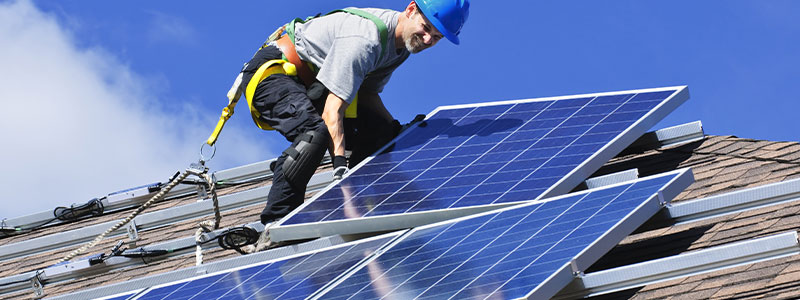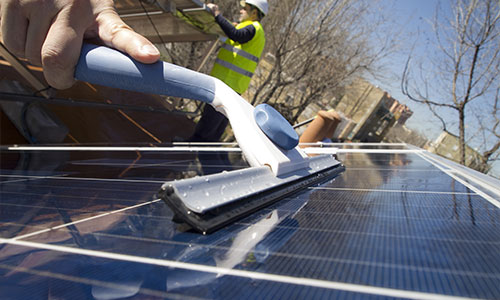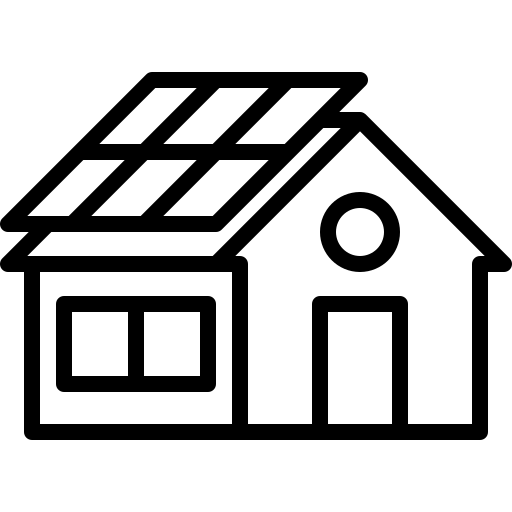Thinking about going solar?
SECTION TWO
Installing a Solar System
Installing a Solar System
What are the benefits of having your panels professionally installed versus taking the DIY route?
Installation can get complicated, but we'll guide you through the whole process.
Our professional solar installers will help you determine what size solar system you need. We will also walk you through the permit process and hook up the solar panels to the grid when we've finished installing them.
Can you install a solar system yourself? Yes, if you want to crawl around on your roof for a couple of days, driving lag bolts, assembling prefabricated parts, and making sure you plug all the right ends into all the right ports.
Foothills Solar Plus will make your installation pain- and worry-free. For an in-depth look at our installation process, head over to our Installation page.
SECTION THREE
Costs, Financing, and ROI on Residential Solar
Costs, Financing, and ROI on Residential Solar
Many consumers ask: How can I pay to go solar? And when will I see an ROI for going solar?
We can help answer those questions.
Residential solar systems aren't cheap, but they ultimately pay for themselves.
Solar panels and inverters cost money, as do the racks to hold them on you roof. You also have to pay installers, inspectors, and an electrician. We understand that these costs can add up. A personal loan from a bank or credit union typically comes with low finance charges and interest rates. But remember this:
Our goal is to completely eliminate your energy bill.
So, while you'll likely have new monthly payments from financing your solar array, you'll never see a power bill again! Plus, many homes produce more solar energy than they require, so you may actually earn money by going solar!
If the initial cost still seems intimidating, you can take advantage of tax benefits from both state and federal tax agencies.
You can get a 26% federal tax credit for systems installed in 2020-2022 and 22% for systems installed in 2023. South Carolina taxpayers can also deduct 25% of the total cost of solar panels, including installation, from their taxable income. Solar panels also increase the value of your home by about 4.1%.
With all these benefits, most homeowners see a net positive ROI on their investment in approximately 6-10 years.

SECTION FOUR
Owning and Maintaining Your Solar System
Owning and Maintaining Your Solar System
Solar panels require very little maintenance.
They do need to be cleaned every year or so. Since dirty panels are less able to absorb the sun's rays, they lower the efficiency of the overall system. Otherwise, panels don't need care or maintenance.
In the event of a snowstorm or ice storm, your panels will probably generate enough heat to melt the snow that falls on them. Should we experience a severe hailstorm, your panels might need to be serviced. Contact us if you believe your panels have gotten damaged.


SECTION FIVE
The Environmental Impact of Solar Power
The Environmental Impact of Solar Power
Do you want to reduce your home's environmental impact?
Solar is one of the cleanest energy options available.
Many consumers choose to transfer to solar energy because they want to reduce their home's environmental impact.
Solar is one of the cleanest energy options available. It does not produce greenhouse gasses or harmful CO2 emissions. Plus, solar energy reduces water pollution and the strain on finite resources like oil and gas.
All these reasons help explain why solar has become one of the most popular forms of alternative energy for everyday homeowners.
Solar panels generate 4-5 times as much energy as it takes to produce them. And today, Environmental scientists are working with engineers and waste management experts to create an increasingly efficient, clean, and environmentally sound solar option.
The sun produces 10,000 times the world's total combined energy use and won't run out of power for 5.5 billion years. Are you ready to tap into a limitless well of clean, inexpensive energy?

Nuclear Power Water usage: 2.3 liters/kwh

Coal Power Water usage: 1.9 liters/kwh

Solar Power Water usage: 0 liters/kwh
Ready for a consultation?
If you think installing a solar energy system might be right for you, give us a call.
We’ll be happy to talk you through your options, and we can even come out and evaluate your home to get a better idea of what kind of real numbers you’re looking at. Call us today at (864) 775-8508 or request a consultation online to have one of our agents give you a call at your convenience.



